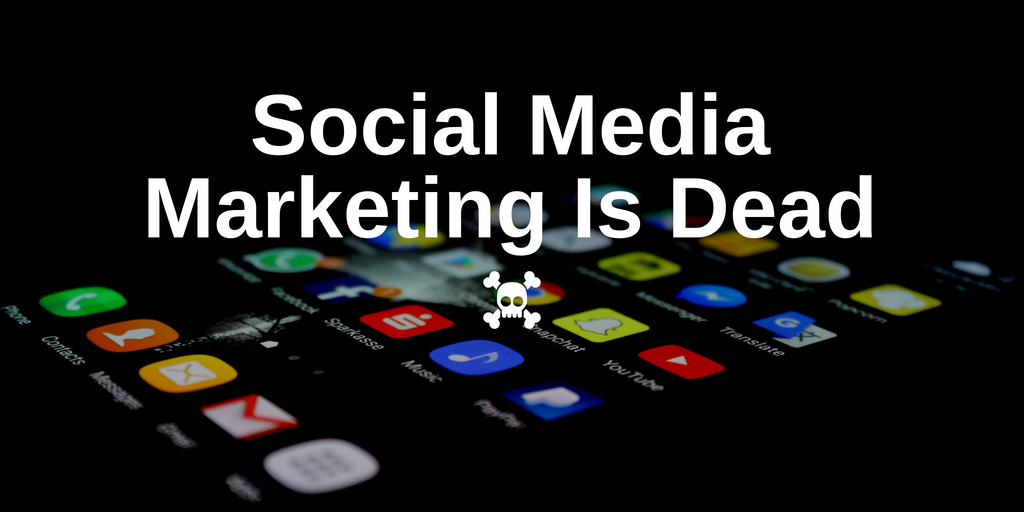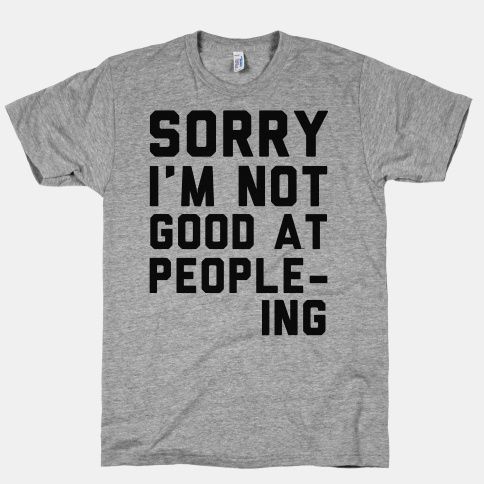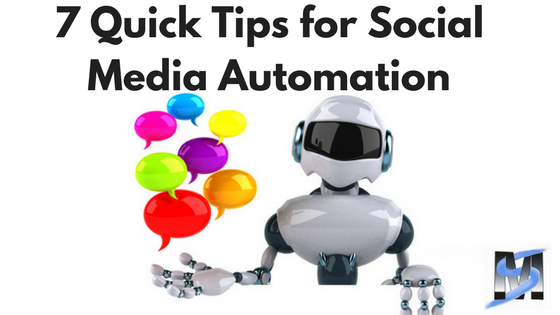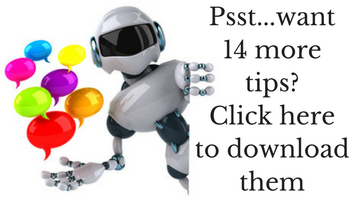
Talk about an angry mob and all of the sudden you find yourself in front of one…
My last blog stirred a few pots. Some people really pulled the pitchforks out when I said “Social Media Is Dead”.
The point of that was that you need to understand marketing. Not just one tool. Social Media is just one tool in your marketing toolbox.
If you want to join the angry mob, go grab a pitchfork and check out that article here.
The idea behind using any type of social media marketing is to get more business.
People say they want more leads. But in reality what they really want is customers.
They want to give you money and you send them customers. Customers that walk through their door, customers that pick up the phone and call them, people that order on their website and so on.
People who decide to spend money with them. Which is great. That’s fantastic. And in some businesses, you can do that.
You can pay someone to get you more customers. Easy.
But in most other businesses, there’s more of a process to it than that.
In most businesses, you have to get them on the phone or have them face to face a few times to actually close them. It can be a multi-step process to make that happen.
Since the online marketing world exploded the process of getting more clients became sort of streamlined.
You run an ad campaign on Facebook or Google or LinkedIn to a landing page where the visitor gives you their details in exchange for something of value that you might be offering.
If you want, that’s where you can have your visitor schedule an appointment with you.
Naturally, the very first thing people think about is redirecting people to a shopping page. Under the principle that the more people come in your store, the more sales you’re going to make.
Are you going to make a sale if you redirecting visitors to a purchase page from an ad campaign?
That’s unlikely. Possible. But highly unlikely. Most businesses need a few steps in between. And chances are you are one of those businesses.
If you follow me, your business is unlikely to be a 7/11 where people come in to buy chocolate and a pack of gum on an impulse.
It’s more likely to have the visitors sign-up for a call with you. Most of the times you’ll offer them something of value to them in exchange for their contact information. It’s actually a good strategy.
But there’s also the flip side to that. And I’m sure this has happened to you too.
How many times have you got an email and went, “What is this? Who’s this guy emailing me? Where did he get my email from?”
And after you open the email and take a closer look you realize that you’ve signed up for a free report or an appointment and you just forgot all about it.
That right there is what you need to avoid with your customers.
This is a clear case of not contacting your customers the moment they signed up. Or you’ve only reached out to them once a few weeks back.
Well, obviously that’s not enough. Once is not enough.
You must follow-up with them constantly.
How often should you follow-up? That depends on your business, your product, and your customers. It’s a very individual thing.
For one of my clients, we literally have set up an entire year of information to be sent out. Because it’s a $30,000 sale, of course, you want to do that.
We make sure that we keep touching the leads for a year before they are ready to be closed. But for you, it might be different.
For another client of mine who runs a fitness studio, we’ve set up a 7-day follow-up sequence. But during those 7 days, we have 12 different contacts with the leads.
I know what you’re thinking… “12 times in 7 days is a bit too much… No wonder people pull out their pitchforks if you keep harassing them.”
Am I really?
I’ll show you why this isn’t “harassing” anybody and why this is actually the best thing you can do in your business and what your customers really want from you.
Before we jump into that, let’s talk about the worst thing that you can actually let happen in your business.
The worst thing that you can let happen in your business is to never call them at all. You get a potential client to give you their contact information and you never follow-up with them.
You’d be surprised how often this happens…
The second worst thing is to wait too long before you call your leads. And that happens a lot as well. But how long is too long? You wouldn’t want to “harass” your leads, would you?
Let me put this into context for you.
A couple of years ago I was working with a company where we were getting leads in. But they weren’t closing anything. And we had no idea why they weren’t closing.
We spoke with the client and he said that the leads were too cold… That’s very unlikely. These were AdWords leads. Which meant someone had to do the following:
- Search for their service
- Clicked on their ad
- Go to their landing page
- Fill out a form requesting someone contact them.
If some goes to that much trouble chances are they have a need for your service.
They might not be calling up up yelling take my money. But for sure they’re not cold.
We talked to the client and we looked to find out the process. Turns out the leads weren’t actually handed out to the sales staff contacted for three or four days. Then some of the sales staff would sit on their leads and didn’t contact them the day they got them so it was another couple of days.
So it was four or five days, sometimes a whole week before these leads were called back.
Of course, they were cold. I mean, if somebody is online doing a search and they click on your ad and they sign up, you need to somehow reach out to them immediately.
It could be a phone call if it fits. It could be an e-mail or even a text. Or you could be doing some combination of the three.
But immediately is when you want to reach out them. Because they’re in the frame of mind that they’re interested in your product or service.
It’s literally the same thing I’ve described before. How often have you received an email and you had no idea who it was from and later you realized it was for something you signed-up for a while back?
Your customer is in the frame of mind that they’re interested in your service or product and you need to take advantage of that.
This is one of the reasons you aren’t going to annoy your customers if you follow-up with them on a regular basis. They are interested in what you have to offer. Maybe they need more reassurance that you are able to solve their problems.
Sometimes they just want to see if you are consistent and reliable.
But what is the best way to do your own lead generation?
A great way to handle it is to have a landing page. A page where you offer something of value to your clients in exchange for their email address and other contact information.
Or you can also use the lead forms on Facebook and LinkedIn. Those are great as well because the people don’t have to leave the platform to give you their information.
Typically what happens next is you send them an email. Sometimes it can be a text. But emails are easier to set up.
What should you say in that email? You want to get an appointment set up with them right away.
It doesn’t matter when the appointment is. What matters now is to follow-up. What happens now is they get a reminder sequence up until their appointment.
The sequence can be anything from emails to texts to phone calls. It depends on your business and the service.
If you are having the customers coming into your office, maybe texts and phone calls will work better. If it’s a video conference, maybe emails will work for you. Usually, emails and texts are going to be enough.
But whatever it is, you need to have multiple contacts with your lead before they show up. And if they don’t show up, then you touch them several times after that and get the appointment rescheduled.
Why would you do that? Well, you paid for the lead upfront. They’ve expressed their interest in what you do. You have their consent to contact them. If at any time they decide that this isn’t for them and say “Hey, please stop”, then you stop. You don’t contact them at all anymore and move on.
This is another reason why having a follow-up sequence isn’t harassing anybody. You have their consent to contact them. And if they don’t want to be contacted anymore, you just stop doing that and that’s the end of it.
My question to you now is, what happens to the people that sign-up for information but never schedule an appointment?
Yup, that’s right, they get a follow-up sequence as well.
Have multiple emails and texts going to them saying “Hey, you signed up… didn’t schedule an appointment… why don’t we get an appointment now?”
How often you keep touching them and for how long really depends on your business and how much is the client value.
There’s no exact formula behind it. We’ve set up an entire year of follow-up with one of my clients. Because it’s a $30,000 sale. You’ll need some time to build enough rapport to close that sale.
But for my coaching client that has a fitness studio, we do a 7-day follow-up sequence but we have around 12 different contacts during that period.
It all depends on the business, the product, and your client.
But ultimately you need to have some sort of follow-up system in place. I’ll give you another example.
Remember when webinars used to have those huge show-up rates? Everybody was running webinars because they had a better chance of closing people directly from the call.
I remember back in the day you’d run a webinar and you’d get a 70% show up rate. These days if you get 30% it’s awesome. And those are people that you paid money to get on the list and to get to the webinar. Same thing.
They didn’t show up on this webinar? No problem, remind them about the next webinar.
Keep touching them until they show up or they tell you to stop contacting them. Bring them back until they become a customer.
But what happens after they become a client? All that follow-up stops, right?
You guessed it. It doesn’t stop.
Because if you’ve ever run a lead generation campaign you will know that most of the times the sales you make upfront from this campaign are only going to probably make you break even.
Because you have to pay for the leads upfront and most of them aren’t going to buy. And that’s OK. Because there are ways to boost sales and make a decent profit.
Wanna know where the real money is?
In the old classic “Do you want fries with that?”. McDonald’s was literally made by “Do you want fries with that?”.
The amount of money that they make just from that is dramatic. And all successful businesses have some sort of “fries” they offer.
If you want to really boost your profit, it’s time to look at different upsells and cross-sells that you can offer.
An “Upsell” is selling a higher priced product. A king size menu or a premium package, for example. And a “Cross-sell” is selling them a complimentary service. Like “fries” or a consulting package to go along with a product.
An industry that’s really good at this is the beauty industry.
A few days ago I was talking to this friend of mine about beauty salons. He went to pick up his wife from the salon just before we met. She was supposed to only get her hair done.
But while they were doing her hair, the hairdresser went “We should pluck those eyebrows… When was the last time you had your nails done? That long time ago? Do you want to get your nails done now?”
And without spending any additional money on new leads, that little salon just greatly increased their profit. All because they asked.
A well-run coffee shop will ask you if you want three shots or four shots in your latte. Or if you want a bagel or a muffin with your coffee.
Why do they have gum and magazines that the rack at the grocery store? Because those are impulse items and it adds to the ticket. They make a lot of money off of those little things. Everything adds up to the ticket.
Retail stores and coffee shops hardly make any money on their core product. Your local coffee shop may keep the doors open with their basics coffee drinks, but it’s the upsells and cross sells that allow the owner to retire.
The core product brings in the clients, but they make their profit on what they cross-sell.
All those upsells make a difference and if you’re doing it right your customers are going to thank you for your help.
If you offer them something that they really need, they will be thankful and will appreciate the fact that you are paying attention to their needs.
I know we covered a lot in this blog. From why to follow-up with your lead to how you can follow-up with them. Then we also talked about upsells and cross-sells and why you need to have them.
Although a bunch of the things we covered are really dependent on your business, your product and your clients, I hope that the example gave you a few ideas on how you can implement the same in your business.
And if you need a hand with it, you can always book a complimentary session with one of our consultants and we’ll help you draw out a strategy tailored for you and for your business.
Just click the button below to get started.





